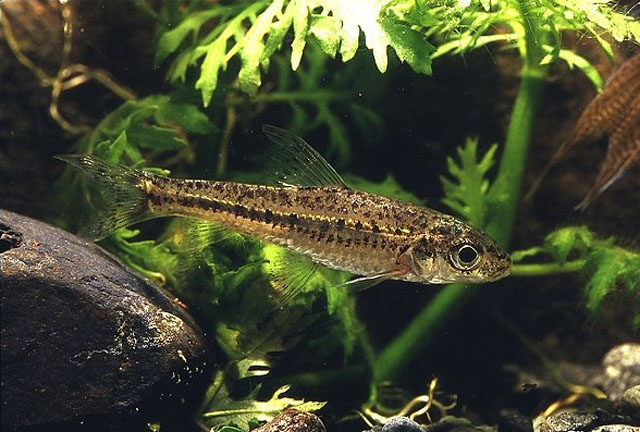| Gobionidae (Gudgeons) |
| 10 cm TL (male/unsexed) |
|
benthopelagic; freshwater; depth range 0 - 5 m |
| Asia: endemic to Taiwan. |
|
Dorsal soft rays (total): 10-10; Anal soft rays: 9-9. Distinguished from its congeners by the unique combination of the following characters: dorsal fin rays 3+7, anal fin rays 3+6, pectoral fin rays 1+13-14; lateral-line scales 34-35, predorsal scale rows 10-11; body robust, the transverse rows of papillae on snout loosely arranged and maxillary barbels short and about equal to 1/2 of eye diameter and body greenish-silver on dorsal and silver-white on ventral side; body scale pocket, with grayish posterior margin, has net-like patterns; body with a longitudinal grayish stripes; all fins translucent; dorsal and caudal in with minute black spots; other odd fins unmarked (Ref. 57944). |
|
|
Not Evaluated (N.E.) Ref. (130435)
|
| harmless |
Source and more info: www.fishbase.org. For personal, classroom, and other internal use only. Not for publication.
